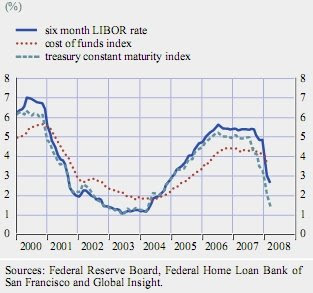I have been reading Cassola et al.'s
A research perspective on the propagation of the credit market turmoil from the most recent
ECB research bulletin. The paper concentrates on information issues in the credit crunch. Here's how I see matters there.
Before the crunch investors had some information on asset
prices as many ABS were (or seemed to be) liquid. On the other hand there were two classes of information failure relating to asset
risk: ignorance (where a risk taker simply had not tried to assess risk); and model failure (where the risk taker had tried, but had got the wrong answer because their model was mis-calibrated and/or failed to include all the pertinent risk factors).
After the crunch in contrast, investors had less information on asset prices but more information on the risk of ABS. Rapid asset prices changes combined with illiquidity caused rapid selling, model recalibration, and risk takers had more information.
Then however, understanding that ABS were illiquid, that prices were both falling and uncertain, and that it was unclear who had what, investors in financial institutions became concerned about their ability to assess bank credit quality. As Cassola et al put it:
the actual extent of exposures to the problematic instruments and the health of specific financial institutions becomes only gradually more known
Hence the interbank market freeze up, amongst other things.
It seems then that a good understanding of the interplay between what's known, what's known to be unknown, what's thought to be known, and what you don't even know you need to know is important in explaining the Crunch. (Why did Rumsfeld get so much grief for
this? I think it was the smartest things he has ever said.) In particular new information can suddenly throw the spotlight on something you thought you knew but in fact you didn't.
Caveat emptor.
Labels: Information Fusion, Markets


















